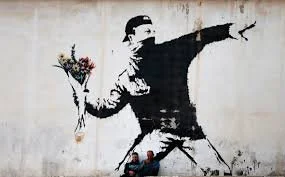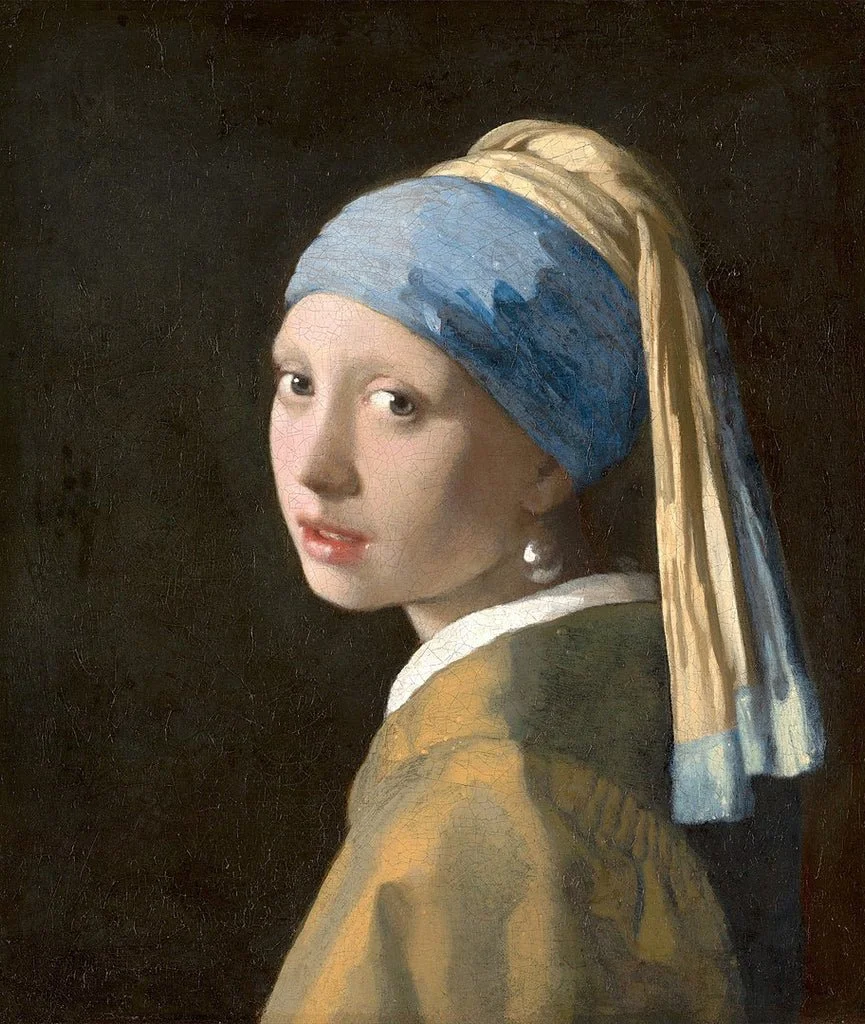Art Mysteries
Caravaggio’s Crime
Self-portrait of Caravaggio
The enigmatic life of Caravaggio is as compelling as the themes he explored through his art. Renowned for his ability to manipulate light and shadow, the Baroque painter captured raw emotion and human experience with a striking intensity. His works often feature dramatic scenes that unsettle the viewer, a reflection of his turbulent life marked by violence and escape.
Two years prior to painting The Beheading of St. John the Baptist, Caravaggio committed a grave crime, taking a life in what can only be described as a burst of fatal impulse. The artist fled to Malta, seeking refuge from the consequences of his actions. Ironically, during this period of fleeing justice, he was commissioned to create one of his most significant works. It is a powerful irony that in a state of desperation, he produced a piece that would become emblematic of his career.
What adds an extra layer of mystery to The Beheading of St. John the Baptist is the story of its completion. Caravaggio, who had long been embroiled in moral and legal chaos, signed his name in a manner as strange as his life; in the blood of the martyr he depicted. This singular act stands out in the history of art—his only known signature on a canvas, steeped in both symbolism and horror.
Theories swirl around this artwork; some suggest that Caravaggio not only captured a biblical event but allegorized his own descent into darkness. Did he see St. John as a reflection of himself, both victim and perpetrator? The ambiguity of intention in his art only enhances its allure, compelling art lovers to confront not just the aesthetic experience but the tumultuous psyche of the man who created it.
In seeking to unravel the complexities of Caravaggio's life and art, one is left with more questions than answers. The true nature of his guilt and the extent to which it informed his work remain elusive—just as the artist himself eluded capture. What is indisputable, however, is the indelible mark he left on the canon of art history, steeped in the shadows of both murder and genius.
Death of an Artist
Van Gogh self portrait
The circumstances surrounding Vincent van Gogh's death in July 1890 have long captivated historians and art enthusiasts alike, igniting debates over whether his demise was a tragic suicide or the result of foul play. Conventional narratives suggest that van Gogh's battles with poverty and profound mental health issues culminated in an act of self-destruction as he succumbed to the weight of his despair.
However, a closer examination reveals several inconsistencies that challenge the widely accepted theory. Notably, the weapon purportedly used in his death—a revolver—was never located, raising questions about the details of the incident. Additionally, eyewitness accounts recount that van Gogh encountered a pair of local teenagers just prior to the incident, who had reportedly been teasing him. Such testimony opens the door to speculation that van Gogh may have been the victim of a violent act rather than the perpetrator of his own fate.
Another theory posits the possibility of an accidental shooting, perhaps orchestrated in a moment of misconduct during the confrontation with the teenagers. This notion further complicates the narrative surrounding his death, suggesting that the true story may never fully come to light.
Ultimately, irrespective of the circumstances of his passing, the art world lost a visionary in van Gogh—a man whose innovative approach to color, form, and emotional expression would forever alter the course of modern art. His legacy endures, inviting continued reflection on the intersection of genius and suffering, and the profound impact he made within the realm of post-impressionism.
Who is Banksy?
Bethlehem, Israel painting
The enigma of Banksy encapsulates a unique blend of artistry and anonymity that captivates audiences worldwide. Emerging in the 1990s, Banksy's satirical graffiti has become a compelling commentary on society, politics, and culture, primarily manifesting in the vibrant streets of England. Although the works themselves testify to Banksy’s existence, the true identity of the artist remains shrouded in mystery, sparking endless speculation and intrigue.
Speculation surrounding Banksy's nationality leans towards British, given the geographical prevalence of their art. However, the lack of concrete evidence regarding the artist's identity allows room for imagination and endless theories. While some fervently seek to uncover the truth, a significant segment of Banksy's admirers argue that the mystique surrounding their identity enhances the allure of their work. This anonymity not only fosters intrigue but also serves as a protective shield, particularly given the politically charged nature of some pieces that could attract unwarranted scrutiny or repercussions.
There is a certain exhilaration in contemplating that the stranger next to you might be the very artist whose commentary challenges societal norms, provoking thought and dialogue through their vibrant art. This notion, that the face behind the famous stencil could be anyone—from a neighbor to a barista—adds an element of thrill to the urban landscape. Ultimately, some mysteries, including that of Banksy, are perhaps best left unsolved, allowing the art itself to remain the focal point of exploration and admiration.
Mona Lisa’s Smile
The Mona Lisa
the Mona Lisa, Leonardo da Vinci’s most celebrated masterpiece, stands as a testament to the intrigue and depth of Renaissance artistry. Her enigmatic expression, delicate smile, and seemingly sentient gaze captivate viewers, evoking a myriad of interpretations and emotions. One cannot help but feel the pull of her eyes, which appear to follow one throughout the room, as if assessing secrets buried deep within the observer’s soul.
The identity of this elusive woman has sparked debate and fascination for centuries, with prevailing theories suggesting she is Lisa Gherardini, the wife of a Florentine merchant. This revelation adds a layer of poignancy to her portrait, elevating her from mere subject to a symbol of universal beauty and mystery.
Contemporary scientific methods, such as infrared imaging, grant us unprecedented access to da Vinci’s creative process. These techniques unveil the layers beneath the surface, revealing initial sketches and alterations that illuminate the artist's meticulous approach. Each brushstroke and revision invites us deeper into the mind of a master.
Should you find yourself at the Louvre, take a moment to contemplate the Mona Lisa's enigmatic presence. Engage with her smile and strive to unravel the mysteries of her gaze; perhaps, in doing so, you will grasp the essence of what has entranced humanity for generations.
Girl with The Pearl Earring
The girl with the pearl earring
While not as widely recognized as the Mona Lisa, the enigmatic figure of the Girl with a Pearl Earring continues to capture the imagination of art enthusiasts and casual observers alike. Painted by the Dutch master Johannes Vermeer around 1665, this captivating portrait speaks volumes despite her lack of a smile. The girl's direct gaze, framed by a striking turban and a luminous pearl earring, invites viewers into a moment of intimate connection, rendering her both relatable and mysteriously distant.
The allure of the Girl with a Pearl Earring is amplified by the ambiguity of her identity. Unlike the well-documented life of Lisa Gherardini, the muse behind the Mona Lisa, the true identity of Vermeer’s subject remains a tantalizing mystery. Scholars and admirers have speculated on her origins, suggesting she may have been a family member, a model, or even a romantic interest of Vermeer. However, none of these theories have been definitively proven, leaving the enigma intact.
Vermeer himself is a figure shrouded in intrigue, with little known about his personal life. This lack of detail invites romantic notions—was the girl a silent confidante, a fleeting love, or perhaps a daughter destined to become the subject of an immortal masterpiece? The absence of concrete information allows each observer to project their interpretations, ensuring that the girl continues to resonate throughout the ages.
Ultimately, the enduring fascination with the Girl with a Pearl Earring lies not solely in her visual appeal but also in the mystery that surrounds her existence. In this way, she occupies a unique space alongside the Mona Lisa, forever inviting inquiry and contemplation, and urging us to reflect on the nature of beauty, connection, and the stories that remain unwritten.





